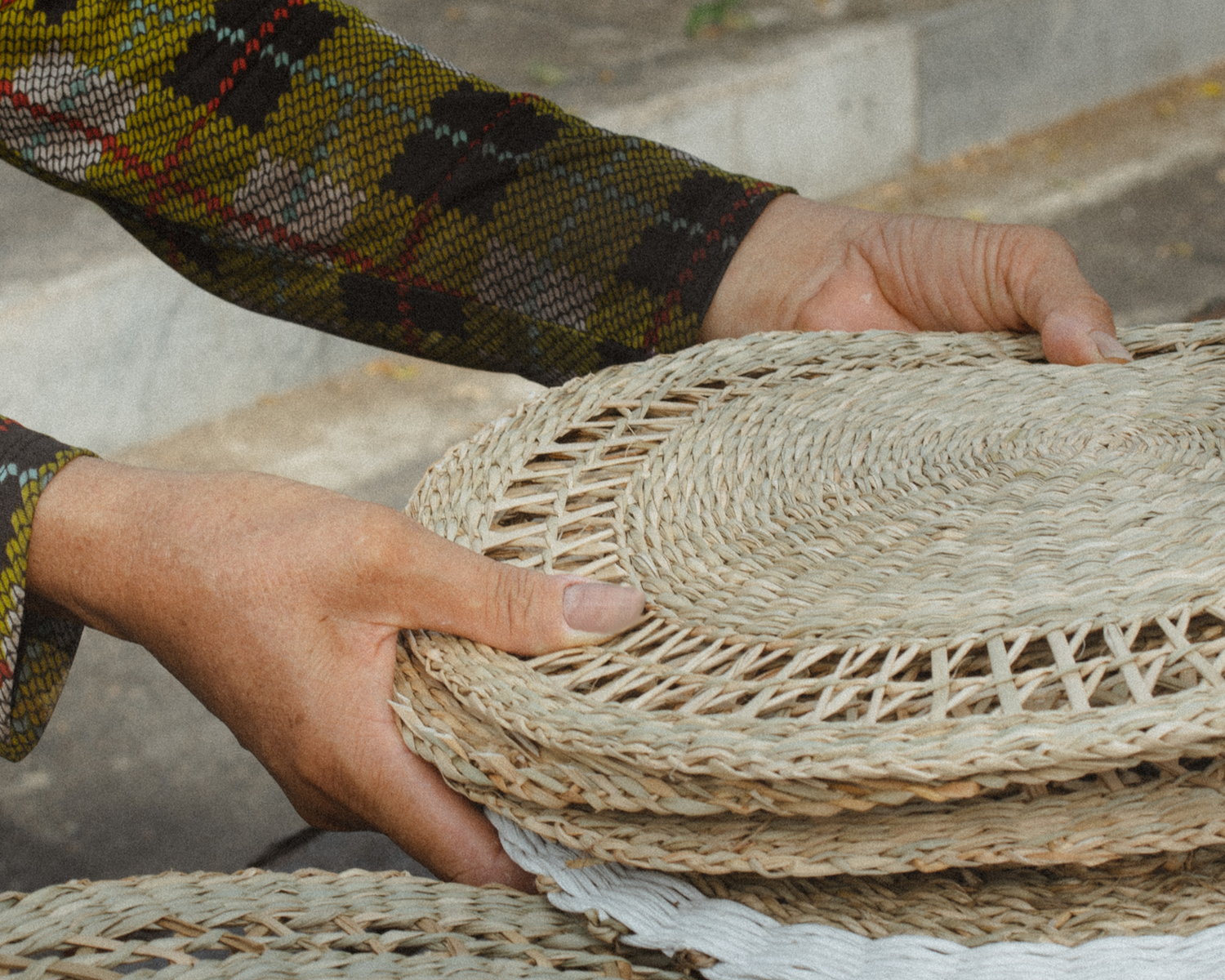Sustainable Materials We Love
Discover the rustic beauty originated from Vietnamese craft villages.
Our dedication to sustainable materials in Vietnam
We choose sustainable materials because they embody our commitment to environmental impacts and preserving Vietnam's natural authenticity.

Seagrass
Seagrass is a species associated with the history of the Vietnamese craft village, from hundreds of years of encroaching on the sea.
After being processed, seagrass has a high level of toughness compared to other sustainable materials, making it easy to bend to the desired shape. In addition, it has a natural luster and smooth surface and holds the color so well that we do not need to dye it.
Therefore, we often use this raw material for decorative products such as carpets, wall decor, or placemats.

Rattan
Rattan is associated with all regions of Vietnam. Besides being resistant to pests and diseases, rattan can live in different weather conditions, making it one of the primary natural materials for craft villages.
Due to its lightweight and flexibility, rattan is malleable into in-house pieces of furniture. Because of its extreme toughness, rattan is considered a staple of the Boho style, featuring curved, wavy furniture.

Water Hyacinth
In the past, water hyacinths' fast-growing trait obstructed waterway traffic and polluted the environment. Later, water hyacinth was exploited as one of the potential sustainable materials for Vietnamese craft villages, which has positive environmental impacts.
Because water hyacinth yarn is thick and large, it creates tight and firm weaving lines. Therefore, we mainly use this raw material for storage and organization products. To prevent water hyacinth from molding when exposed to water, artisans clean, dry, and steam it very carefully.

Mother of Pearl
Thriving in the coastal waters of Vietnam, mother-of-pearl originates from the inner layers of mollusk shells and is intricately cultivated by skilled artisans in local Vietnamese craft villages.
Known for its inherent elegance and ethereal quality, mother-of-pearl often takes center stage in handicraft home decor offerings. That’s why we love to infuse this raw material into our trays, plate, and wall art.

Bamboo
Bamboo thrives abundantly across the northern, central, and southeastern regions of Vietnam, flourishing in the forests and upland areas. For generations, bamboo has been deeply woven into Vietnamese culture and daily life, serving purposes ranging from traditional weaponry to a symbol of resilience.
The dense fibers in bamboo canes give the plant extreme flexibility, allowing it to bend without breaking. That’s why bamboo is used the most among sustainable materials to make furniture due to its ability to withstand significant wear and tear.

Jute
Originating from abroad but being imported to Vietnam hundreds of years ago, jute has accompanied the people of the Northern region in the war history to the present.
Jute has a brown color and natural gloss, so we take advantage of its rusticity to make wall decor. Its good water absorption as one of the sustainable materials also makes it very suitable for making rugs. After not being used, jute will decompose into the soil, which is environmentally friendly.

Corn Fiber
Corn fiber, also known as maize fiber, is a sustainable material derived from the husks or stalks of corn plants. In Vietnam, the use of corn fiber dates back to ancient times, when our artisans discovered its potential for creating beautiful and functional crafts.
It is known for its natural strength and durability, allowing it to withstand daily wear and tear. This raw material finds extensive use in creating items such as baskets, rugs, lampshades, and decorative accents. Its natural texture and earthy tones add a warm and organic touch to interior spaces.

Fern
From the ancient forests to the mountainous regions, Vietnamese ferns have adapted and evolved, playing a vital role in the region's rich biodiversity and serving as an important resource for local communities.
Its vibrant green leaves exude a natural freshness and smooth texture. The fibers of fern offer exceptional durability and flexibility, surpassing other sustainable materials, including rattan. While fern is less commonly used in furniture, it finds its primary application in household items such as baskets, planters, trays, lamps, and more.

Raffia
Raffia, a natural fiber extracted from the leaves of the raffia palm tree, has long held a treasured place in the heart of Vietnamese culture. For generations, the our artisans have harnessed this raw material, showcasing our exceptional craftsmanship through a myriad of creatively woven products.
The raffia fiber's inherent flexibility and ability to absorb color well allow it to be dyed in a vast array of hues. This versatility, combined with the material's renowned strength, has made raffia a popular choice in the world of traditional crafts, from baskets to placemats.



